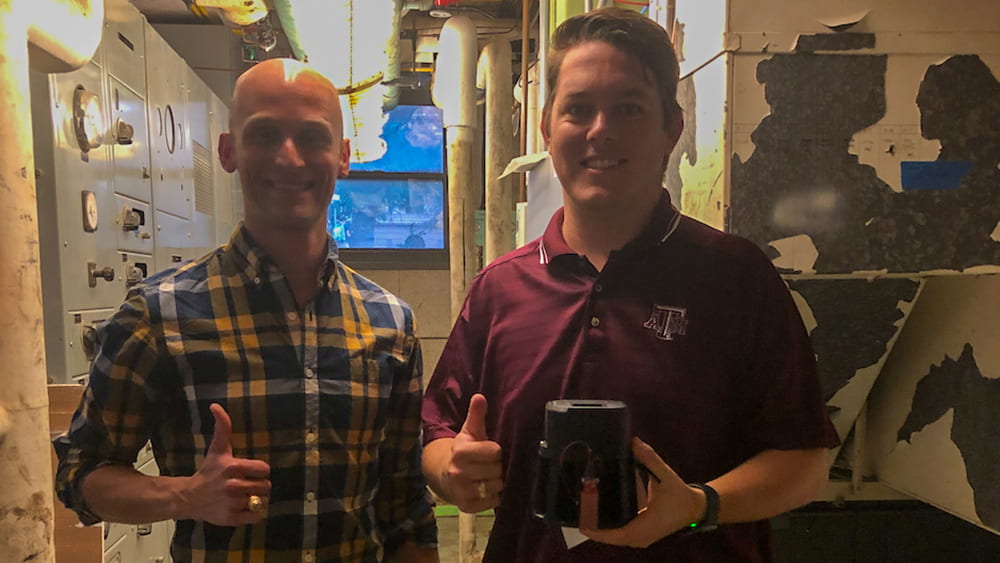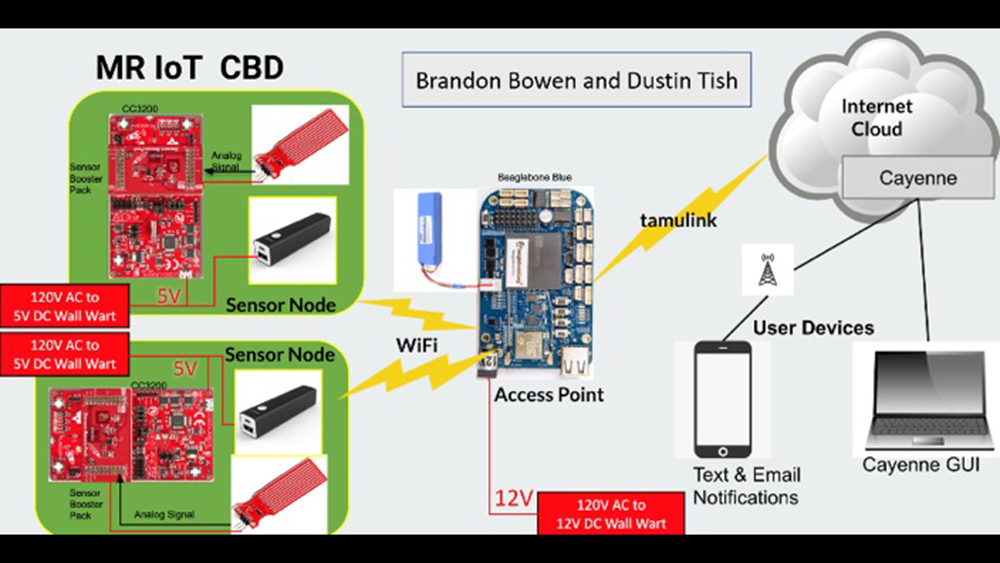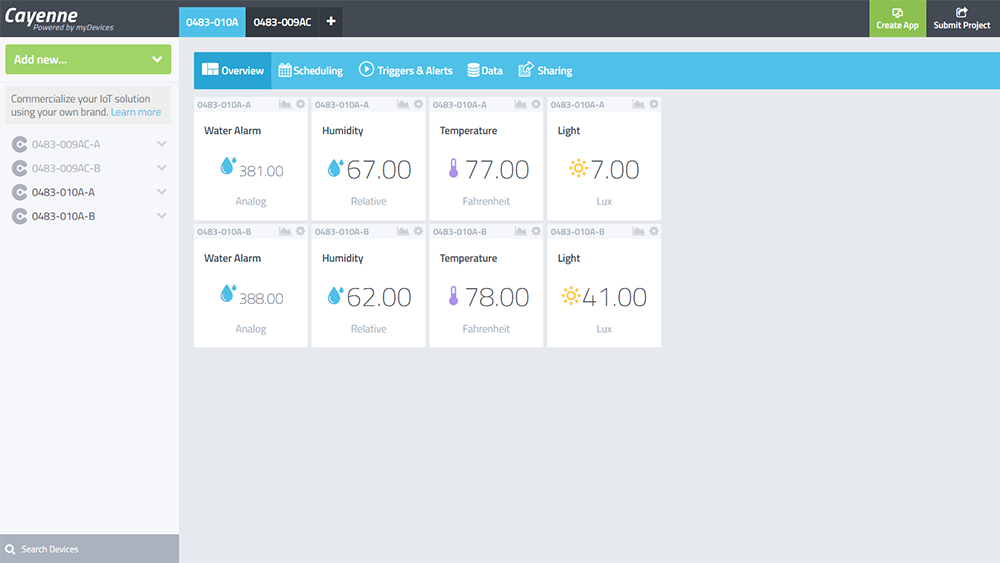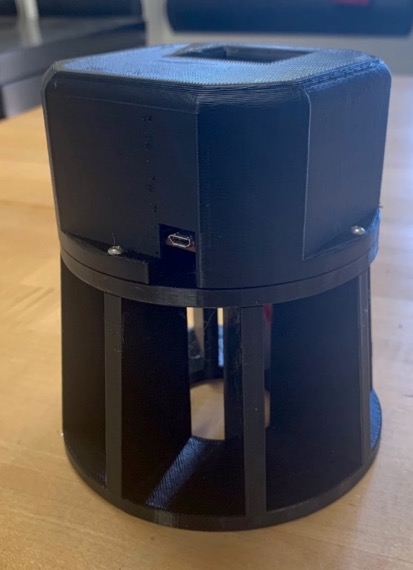
In many of the older buildings across the Texas A&M University campus, maintenance rooms suffer from lack of security monitoring and flooding during the significant rains and storms that frequent College Station throughout the year. Floods can cause significant equipment damage, resulting in monetary loss as well as disruption in educational and administrative activities. These issues are currently present in Fermier Hall and Thompson Hall, home to the Department of Engineering Technology and Industrial Distribution (ETID). These two buildings have a total of 11 such mechanical rooms, many of which have experienced flooding and loss in the recent past.

Department head Dr. Reza Langari and facilities manager Frank Cervantez decided that action was required to address the problem and to find a way to better monitor these rooms and be alerted when problems such as flooding or unauthorized entry was detected. Once this decision was made, a plan needed to be developed and implemented to mitigate these issues. Langari decided to challenge students in the department to design and implement a solution. Seniors Dustin Tish and Brandon Bowen stepped forward to take on the design and development of the “Maintenance Room Internet of Things” project over the summer semester.
Tish is a student in the department’s multidisciplinary engineering technology program with an emphasis in mechatronics, and Bowen is in the electronic systems engineering technology program (ESET).

Working with Cervantez, the team defined the overall objectives of the project, its functional requirements and performance specifications. During the initial design phase, they decided that implementing an acceptable solution could best be accomplished through the application of internet of things technology. Both Tish and Bowen had helped develop the internet of things coursework used in a Nation Science Foundation-funded ITEST workshop offered by principal investigator Dr. Michael Johnson over the last three summers to selected Texas middle school math and science teachers. They decided to put their newly developed expertise in building internet of things systems to the test by solving the costly problem faced by ETID.
During the project, Langari took on the role of customer, Dr. Ana Goulart, ESET program coordinator, agreed to be the technical advisor, and Cervantez accepted the role of subject matter expert. Tish was the embedded systems lead while Bowen took on the internet of things broker and dashboard software development efforts. The team met weekly to provide status update reports and to seek decisions and approval for resource procurement.
The project resulted in a new embedded system module that uses the university’s wireless network to monitor and publish environmental data from each maintenance room to an internet of things program. The dashboard created by the team allows authorized personnel to log into the program and subscribe to the information presented in graphical format. In addition, if certain environmental parameters such as water or light levels are exceeded, the internet of things program informs Cervantez about which parameter of which maintenance room is out of tolerance. Having this information essentially anywhere internet access is available allows Cervantez to quickly address the problem and resolve the specific issue before costly damage is realized.

In August, the team delivered the first unit for operational testing. During the test phase, the system alerted Cervantez to a problem allowing him to resolve the issue in a timely manner and avoid costly repairs and disruption of service.
The team is now in the final delivery of 20 operational units to ETID together with the video-based documentation for continued support and servicing of the units. As the project wraps up, Langari has strongly encouraged Tish and Bowen to seriously consider taking their design to the next level and becoming entrepreneurs.